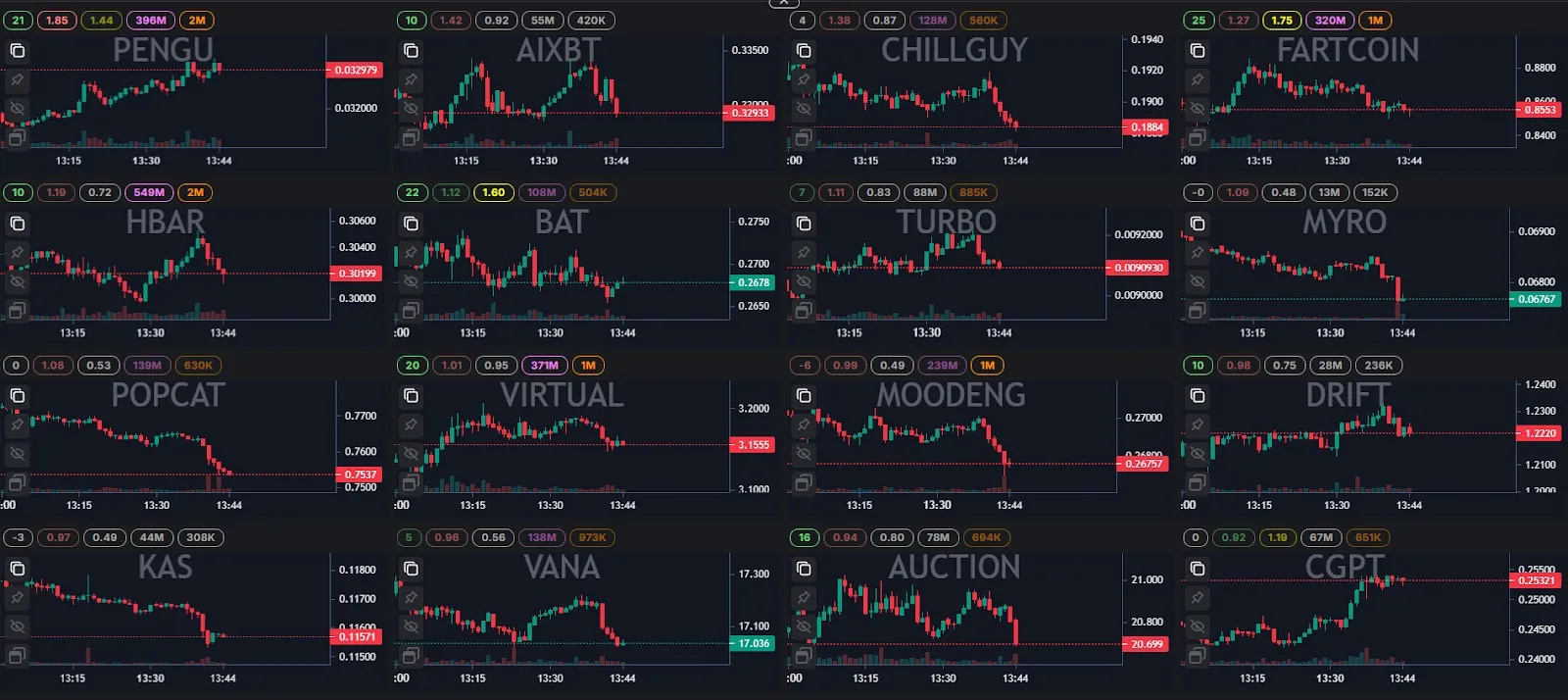
Cryptocurrency arbitrage: Everything you need to know

The cryptocurrency market is one of the most dynamic and volatile financial markets in the world. It attracts both investors and traders with its opportunities for profit. One of the popular ways to make money is cryptocurrency arbitrage. This strategy is based on utilizing price differences between assets on different platforms or within one. In this article, we will go into detail about what cryptocurrency arbitrage is, what types and strategies exist, and how to start earning with it.
Cryptocurrency arbitrage - what it is
Cryptocurrency arbitrage is a strategy of earning based on the price difference of a certain cryptocurrency on different exchanges or in different trading pairs. Arbitrage is based on the idea of buying an asset cheaper in one place and selling it more expensive in another, making a profit due to market inefficiencies. Such opportunities arise due to different liquidity, demand and supply levels at different venues.
Types of cryptocurrency arbitrage
Let’s look at the main types of cryptocurrency arbitrage:
1. Spot arbitrage
This is the most basic type of arbitrage. It involves buying cryptocurrency on one exchange at a lower value and selling it on another exchange at a higher value.
Example:
-
On exchange A, a bitcoin (BTC) is worth $25,000.
-
On exchange B, bitcoin is worth $25,300.
-
An arbitrageur buys Bitcoin on exchange A and sells it on exchange B, making a profit of $300 per BTC (less commissions).
Advantages:
-
Ease of implementation.
-
Low risks (prices on different exchanges do not diverge much).
Disadvantages:
-
Dependence on the speed of transactions between exchanges.
-
Commissions for withdrawal/input of cryptocurrency.
2. Triangular (triangular) arbitrage

This type of arbitrage is based on the use of price differences within one exchange between several trading pairs.
Example:
-
BTC/ETH, ETH/USDT, and BTC/USDT.
-
You start with USDT, buy ETH, then BTC, and then USDT again.
-
If the pair prices are set up so that the cycle brings in more USDT than it originally did, you make money from arbitrage.
Benefits:
-
Does not require transferring funds between exchanges.
-
Fast execution (all transactions take place within the same exchange).
Disadvantages:
-
Competition with other traders.
-
Commissions for each transaction can eat up profits.
3. intermarket arbitrage (futures).
This type of arbitrage is the difference between the prices on the spot and futures markets.
Example:
-
In the spot market, BTC is worth $25,000.
-
On the futures market, BTC is worth $25,500.
-
An arbitrageur buys BTC on the spot market and simultaneously opens a short on BTC futures.
As the prices converge, the difference becomes profit.
Advantages:
-
Possibility of using leverage to increase profits.
-
No need to transfer funds between exchanges.
Disadvantages:
-
Risk of changing price trends in the futures market.
-
Necessity to monitor the futures execution dates.
4. Cross-currency arbitrage
This type of arbitrage is based on the difference between the exchange rates of the same cryptocurrency in different currency pairs.
Example:
-
BTC/USDT and BTC/EUR.
-
The exchange rate difference between the pairs allows you to make a profit by converting first to one currency and then back.
Advantages:
-
Availability on many exchanges.
-
Ability to work within one platform.
Disadvantages:
-
High dependence on commissions.
-
Low profitability without large volumes.
5. Liquidity arbitrage
This type of arbitrage is related to finding liquidity imbalances in different markets. For example, illiquid exchanges often have strong price deviations.
Example:
-
On a large exchange, BTC is worth $25,000.
-
On a small exchange, BTC trades for $24,500 due to low liquidity.
-
The arbitrageur buys on the small exchange and sells on the large exchange.
Advantages:
-
Opportunity for high profits.
-
Utilization of market imbalances.
Disadvantages:
-
Risk of delayed withdrawals.
-
Low liquidity may limit volumes.
6. Arbitrage using automation (bots)
Automated algorithms allow arbitrage trades to be executed in milliseconds, which increases the chances of success.
An example of bot operation:
-
A bot monitors price differences between exchanges in real time.
-
When a favorable spread is detected, it automatically executes a trade.
Advantages:
-
High speed.
-
Ability to process a large amount of data.
Disadvantages:
-
High cost of developing or buying a bot.
-
Competition with other algorithms.
7. Arbitrage using Stablecoins
Involves using the exchange rate differences of different stablecoins such as USDT, USDC, BUSD.
Example:
-
USDT trades for $1.01 on one exchange.
-
USDC is trading for $0.99 on another exchange.
-
A trader buys USDC and sells USDT.
Advantages:
-
Low risk as stablecoins are less volatile.
-
No dependence on the cryptocurrency market.
Disadvantages:
-
Small spreads.
-
The need to work with large volumes.
8. Regional arbitrage
Exploiting the difference in cryptocurrency prices in different countries due to restrictions or differences in supply and demand.
Example:
-
BTC may cost more in South Korea due to high demand.
-
Traders buy on the international exchange and sell on the Korean exchange.
Advantages:
- High profits due to regional imbalances.
Disadvantages:
-
Regulatory restrictions.
-
Difficulties in transferring funds between countries.
Cryptocurrency arbitrage strategies
-
Automated arbitrage - using programs that monitor market opportunities and automatically make transactions.
-
Manual arbitrage - trader searches for and utilizes price discrepancies on their own.
-
Waiting strategy - monitoring prices and waiting for the right situation to enter the market.
-
Risk hedging - combining arbitrage trades with other instruments to minimize risks.
Tools for making money from arbitrage
For a more efficient arbitrage, many tools will be required, the main ones are:
Trading bots
Trading bots help automate arbitrage processes, monitor prices and make trades quickly.
Scanners
Scanners are services that help you search for arbitrage opportunities. Popular tools: Coinarbitrage, ArbMatrix.
Exchanges
Popular exchanges with high liquidity are suitable for arbitrage: Binance, Bybit, OKX, HTX, Gate. io and BingX.
Channels and chats in Telegram
Many traders join communities where they share arbitrage opportunities and insights. Such chats are useful for sharing experiences and getting up-to-the-minute information.
Manual search

Manual search requires time and experience, but it allows you to understand the market more deeply and find unique opportunities that are not available to automated tools.
Is Cryptocurrency Arbitrage Legal
Cryptocurrency arbitrage is legal in most countries, as it is based on the use of market mechanisms. However, it is important to consider the laws of your country of residence related to taxation and restrictions on cryptocurrency transfers.
Where to start with cryptocurrency arbitrage
You can start cryptocurrency arbitrage by following a clear plan. This will help minimize risks and understand how to properly exploit price differences. Here is a step-by-step guide:
1. Learn the basics of arbitrage
What to study:
-
How cryptocurrency exchanges work.
-
The nature of cryptocurrency volatility.
-
Types of arbitrage (inter-exchange, triangular, statistical, and others).
-
Commissions on trading, deposit and withdrawal of funds.
Where to study:
-
Online courses on cryptocurrency trading.
-
Veles Finance platform training materials.
-
Video tutorials on YouTube.
-
Articles and guides about cryptocurrencies and arbitrage.
2. Choosing exchanges
Selection criteria:
-
Reliability and reputation of the exchange.
-
Supported currency pairs.
-
Size of commissions (trading, withdrawal, deposit).
-
Limits on deposit/withdrawal of funds.
-
Convenience of API (if automation is planned).
-
Withdrawal speed.
Popular exchanges for arbitrage:
3. Checking for price differences
Tools:
-
Aggregator sites: CoinMarketCap, CoinGecko.
-
Specialized platforms: CryptoCompare, Bitsgap.
-
Bot services for monitoring spreads (e.g. ArbiTool).
Tip: Find several currency pairs with constant price gaps, e.g. BTC/USDT, ETH/BTC.
4. Estimating fees and costs
What to consider:
-
Trading commissions (usually 0.1-0.25%).
-
Funds deposit/withdrawal fees.
-
Cryptocurrency transfer costs between exchanges.
-
Potential losses from price changes during transactions.
Example calculation:
-
Buying BTC on exchange A at $50,000 with a 0.1% commission.
-
Transfer to exchange B ($10 transfer fee).
-
Selling BTC on exchange B at $50,500 with 0.1% commission.
5. Registration and verification on exchanges
What’s important:
-
Create accounts on all selected exchanges.
-
Go through verification (usually requires documents such as passport).
-
Make sure all accounts are ready for deposit/withdrawal.
6. Funding of accounts
Capital Allocation:
-
Deposit funds on all exchanges to execute trades quickly.
-
Use different assets to deposit (e.g. BTC, USDT).
Recommendations:
-
Start with small amounts to test the strategy.
-
Make sure transactions are fast.
7. Testing the strategy
Conducting tests:
-
Choose a few currency pairs to test.
-
Conduct trades in test mode or with minimum amounts.
-
Analyze the execution time of trades and actual profits.
Evaluate:
-
Transaction speed.
-
Real profit after commissions are taken into account.
-
Potential risks.
8. Risk Management
Basic rules of thumb:
-
Never invest all funds in a single transaction.
-
Consider the risk of delayed transfers.
-
Be prepared for changing market conditions.
-
Use only the amount you are willing to lose.
9. Monitoring and analyzing
What to analyze:
-
Transaction success (profitability, speed of execution).
-
Market behavior (volatility, liquidity).
-
Profit to risk ratio.
Tip: Keep a log of trades to evaluate the effectiveness of your strategy.
Examples of cryptocurrency arbitrage
- Inter-exchange arbitrage:
-
Buying ETH on Binance at $10,000.
-
Sell ETH on OKX at $10,500.
-
Profit: $500 minus commissions.
- Tri-party arbitrage:
- Exchange USDT to BTC, then BTC to ETH, and back ETH to USDT. If the final amount is greater than the initial amount, you make a profit.
Safety tips for arbitrage
-
Avoid storing large sums of money on exchanges.
-
Make sure the platforms and tools you use are reliable.
-
Keep an eye on withdrawal and transaction fees.
-
Use two-factor authentication (2FA).
-
Be prepared for technical glitches and delays.
Who is suitable for cryptocurrency arbitrage
Cryptocurrency arbitrage is suitable for:
-
Those looking for a relatively low-risk way to make money.
-
Traders with analytical skills and knowledge of the basics of exchanges.
-
Investors who are ready to use automated tools.
Advantages and disadvantages of cryptocurrency arbitrage
Advantages:
- Minimal market risk
When arbitrage is implemented correctly, you do not depend on the direction of the market, as your profit depends on price imbalances.
- Variety of strategies
You can choose between different types of arbitrage: inter-exchange, triangular, statistical, derivatives arbitrage, etc., which allows you to adjust to different market conditions.
- Ability to automate
Arbitrage strategies can be easily automated by bots, which allows you to earn even without regular participation.
- Potential for regular profits
Small but regular profits are possible with constant monitoring of the markets.
- Accessibility for beginners
No deep knowledge of trading or complex analytical tools are required to start arbitrage.
- High liquidity
Many cryptocurrencies (e.g. BTC, ETH, USDT) have high liquidity, which makes it easy to execute trades.
- Independence from global trends
Arbitrage profits are possible even in a falling or sideways market.
- Globalization
Cryptocurrency exchanges operate 24/7 worldwide, making it possible to find arbitrage opportunities at any time.
Disadvantages:
- High commissions
Fees for deposits/withdrawals, transactions, and trading can “eat up” a significant portion of profits.
- Transfer delays
Some cryptocurrencies have high transaction confirmation times, which can result in losing favorable prices.
- Market volatility
Cryptocurrency prices can change quickly during the process of transferring assets between exchanges, leading to losses.
- Limitations of exchanges
Some exchanges may have limits on deposits/withdrawals or currency pairs, which limits arbitrage opportunities.
- Need for large capital
Large start-up capital may be required to make significant profits, especially if price differences are minimal.
- Competition
The large number of arbitrageurs in the market quickly eliminates price gaps, making the strategy less profitable.
- Technical difficulties
Effective arbitrage often requires writing bots, setting up APIs, and monitoring multiple exchanges, which can be difficult for beginners.
- Risk of fraud
Some exchanges or platforms may be unreliable or fraudulent, which can lead to loss of funds.
- Regulatory restrictions
Trading on foreign exchanges may be restricted in some countries, making it difficult to use the strategy.
- Low profitability on a single trade
Arbitrage trades often generate small profits (e.g. 1-2%), requiring multiple trades to generate significant returns.
- Dependence on speed
The faster you detect and realize arbitrage opportunities, the higher the probability of success. Delay can eliminate price differences altogether.
Conclusion
Cryptocurrency arbitrage is an effective way to earn money for those who are willing to analyze the market and use modern tools. With the right approach, arbitrage can become a stable source of income.
FAQ
1. What is the minimum amount needed for arbitrage?
The minimum amount depends on the chosen strategy, but for effective arbitrage it is recommended to start with $500-$1000.
2. Can I start arbitrage for beginners?
Yes, but it is important to start by learning the basics of the market and working with small amounts.
3. What are the risks of arbitrage?
The main risks are delays in transferring funds, price changes and high commissions.
4. Do I need special skills for arbitrage?
Knowledge of the cryptocurrency market, the basics of technical analysis and working with exchanges is desirable.
5. How much time should I devote to arbitrage?
It depends on the strategy: automated arbitrage requires less time than manual arbitrage.